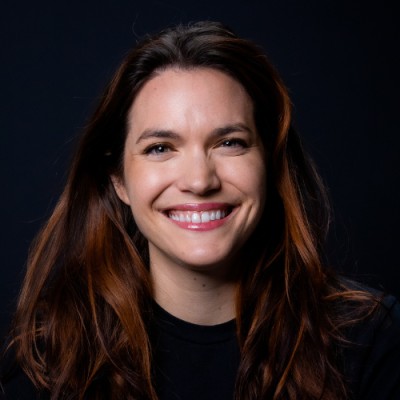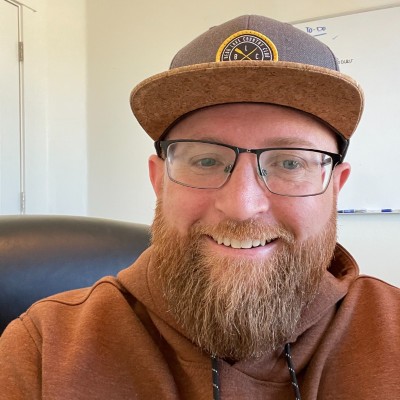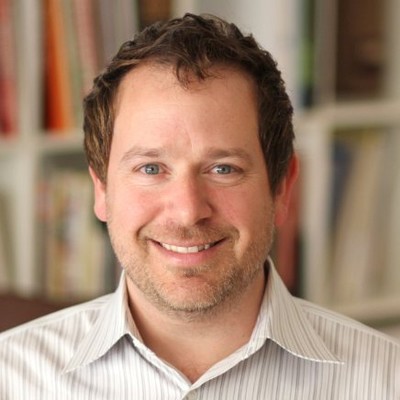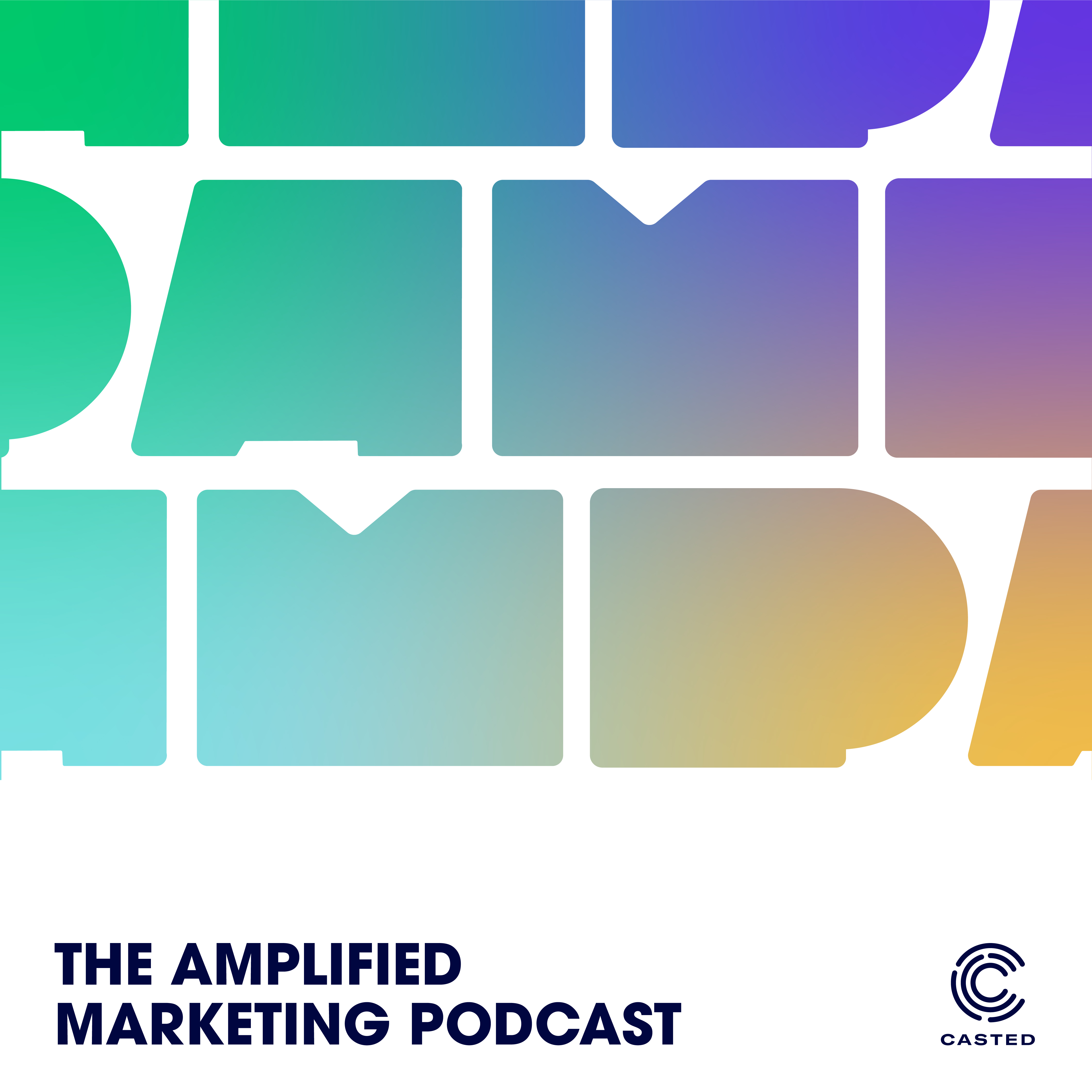How B2B Podcasts Grow Up: Making Your Podcast More than Just a Podcast
- 0.5
- 1
- 1.25
- 1.5
- 1.75
- 2
Lindsay Tjepkema: In the last episode, we left off learning from B2B podcast experts on how they grow their show's audience. But what if we think even bigger, like galaxies bigger? In this episode, we're blasting off into the exciting world of making your podcast way, way more than just your podcast. In fact, it's the center of your content, the universe. I'm Lindsay Tjepkema, a lifelong marketer and proud CEO and co- founder of Casted, the B2B marketing platform for brand podcasters. And I've teamed up with experts across the top sales and marketing teams in the world to detail each of the five stages of this maturity curve and what you can do to launch and grow a show with confidence. This is How B2B Podcasts Grow Up, an original series from Casted. As a CEO of a tech company, particularly as one with a background in marketing, I know a thing or two about personas and ICPs, namely that there's rarely just one. Let's be honest. The rarest occurrence in the marketing world is that you have your ICP fit in a neat, tiny little box. It's nearly possible to identify just one persona to rule them all. Just doesn't happen that way, at least not for many of us. So how can we rectify this with our branded podcast? Is it possible to make a show for multiple audiences? And if it is possible, should you even do it? Just because you can, doesn't mean you should, right? Or maybe is there another way? Here's how Molly Chill, senior director of content marketing at Drift and her team faced this scenario head on.
Molly Chill: Podcasting has been part of Drift's content strategy, I think, from the beginning, definitely before I joined three years ago. We were early adopters. Our OG show, Seeking Wisdom was something our founder got on the bandwagon early and saw the value and it was no turning back from there. And I think just along the way, we found, I love this line that we were talking about earlier, " the riches and the niches." We definitely found our audience along the way. Once Seeking Wisdom took off, we ended up having auditions for hosts at Drift. People would pitch our leadership team, our marketing leadership team, DC, our founder who had that show, Seeking Wisdom, their idea for the next Drift podcast. And from there, we got three different shows geared at very different audiences, but all ultimately were helping build the Drift brand and reaching different people in different niches. So we still have this show, it's geared towards operations. We have another show called Growth that is geared more towards product managers and growth marketers. We had a show called Build that was also geared towards more senior product managers, people at bigger companies, people with growing companies. And so it's just really helped develop our brand at every kind of intersection of our company's growth.
Lindsay Tjepkema: And thus was born the Drift podcast network. Yes, we may be getting a little ahead of ourselves with the concept of a network in stage three, but stick with me here. If your company is in a similar situation to Drift and you find yourself with lots of different niche audiences that all have different wants and needs and habits, a network state of mind maybe for you. Now, just pause your thinking and don't get ahead of me here, I'm not saying that stage three is the time to launch three other new podcasts. In fact, I'm strongly discouraging that at this stage, but lack of focus in your audience is a surefire way to stall your show's growth. So if you're trying to speak to too many different audiences, you'll end up resonating with, well, no one. So at stage three, a safe way to experiment is to consider different episode styles within your feed. This could look like many different types of shows. You could bring a different host in once a month to talk about a topic that matters to a specific ICP that might fall a bit outside of your original audience. Or you could double up on your episode cadence and post one episode on a Monday for this ICP and another on a Tuesday for that ICP. There's lots of ways to do it, but by playing with different show styles for different audiences, all within your same feed, you can test the waters for what could become a brand new show for your brand in the future. So if you decide to experiment in this way, I'd highly encourage you to pay very close attention to your episode download and consumption numbers. If you notice some big shifts on days that you're posting content for that new niche audience, that could be a great indicator as to whether or not it's a worthy investment of your team's time and energy and resources. So you can't dream big without paying attention to the data. But speaking of dreaming bigger, I've got to go back to Drift for a second. So even beyond their multi- show Drift podcast network, they're thinking so much bigger about their shows. In fact, they're creating a whole content universe and podcasts are a very big part of it.
Molly Chill: We talk about it all the time. We're getting to be actual spacesters, but we call it Solar Systemming our content. So at Drift, this is my spiel, at Drift, the center of our content world is Drift Insider, which is our members only content experience. There's classes, courses, lots of education, but all the planets that surround Insider are the media. And so for me, blog, podcast, newsletters, but we also have more of our content offers, which is e- books, reports, webinars, and so there's so many other channels that kind of are in this solar system of Drift. And so our idea is to really just create solar system or content means. So we have this brand new episode, the first episode of Pipeline, we launched it, then we turned it into a blog post, already did that, check, and we also promoted it in the newsletter. So it's really just like, Lindsay, you've said this a lot, bringing the value out of one piece of content and then refreshing it or reusing it or finding new ways to reinvent it as opposed to recreating the wheel and being like, " Oh shoot, we have to create a brand new offer." We don't have to create a brand new offer every time. That's not the goal of content marketing. We have a limited amount of resources and obviously limited amount of time, people like to sleep, whereas solar systemming your content is really just making sure that we're also integrated across the team.
Lindsay Tjepkema: Solar systemming their content, brilliant. And Molly and her team aren't doing this without some serious trends to back it up. So take it from Michael Rivo. Michael is the director of Salesforce Studios team, which recently launched Salesforce +. If you don't know, Salesforce + is a Salesforce owned streaming platform. I'm just going to pause there. Yes, seriously. Salesforce streaming platform. This is the dream of so many content marketers. It's chockfull of tons of original content from their podcast to their video series, to replays from their Dreamforce conferences, and so much more, truly. As a side note, if you haven't checked it out, you really should. It's just rich with information. And so Michael shares a bit about some of the trends that he and his team are seeing in the digital content consumption here on Salesforce +.
Michael Rivo: One thing that we're working on is starting to... And I think a lot of us see this in New York Times or the Wall Street Journal now, how audio is a part of news stories. So you can listen to this or you can read it, or podcasts are infused throughout your reading experience. So I think this is becoming more of the common language in media and something that we want to start doing more and we're doing that. We have an integration into our blog where we can pull clips into the blog or run an episode. We'd like to get to the place where that's going to be a really personalized and automated experience where through tagging, et cetera, and all the systems talking to each other, we're going to be able to display the right content at the right time. That's work that's happening and in the future as well, I think all of us are looking for that kind of holy grail, but I think we're sort of scratching the surface of what we can do there. And the more that we can pull in interesting audio to create this universe of audio that exists across our digital experiences is really where we're trying to go right now.
Lindsay Tjepkema: Okay, nerding out for a minute, this is beyond brilliant because think of how we consume media at large today. The first thing that comes to mind for me is Marvel. If you know me at all, you know that I'm a huge Marvel nerd. I love Marvel, my kids and I watch all the things. So think about how they've woven together so many characters and plot lines and stories in and out of different movies and shows, and they all weave in together. And there's some big blockbusters and some little show series, and it all stemmed from comics. It's incredible. And that's literally why it's called the Marvel Cinematic Universe. They're seamlessly integrating all of their IP among multiple channels, multiple platforms, multiple mediums, and that's not even to mention all of the fan- fueled content. Talk about user generated content that's being created all around this, well, truly universe. So why wouldn't we be taking a hint from this huge consumer phenomenon right now and be creating some seamless integrations in our own content strategies? That sounds fun to me, right? Salesforce and Drift have taken the hint, their teams realize that a podcast is never just a podcast. It's part of the brand's entire solar system of content. So wait, hold on. What if it was even bigger than just content? What if your podcast is actually a marketing data goldmine? Here's James Gilbert of Flip.
James Gilbert: So then I have this crazy idea when I was at CRMNEXT is like, " We are going to have Gong sit in the background of every Zoom call as well and analyze every podcast we do." So most people weren't thinking of Gong as, " How can you leverage this in marketing?" I was putting it in every single podcast. And what came from that was we were able to adjust our entire go- to- market strategy because of it, because of the insights we were getting. We were talking to people in the ICP, we were talking to people that were interested in our product or that could buy our product. We're talking to specific roles that we knew were going to be part of the buying decision, and we had all of this data now all through doing the podcast. So what was interesting is because I was the host, it kind of positioned me on the leadership team to be the thought leader within our own team to help guide the GTM. Our CEO really relied on me a lot when we were in our leadership discussions, like, " James, talk to us about what's happening in the market right now." Because you can have a pulse, you can hire a research firm to spend thousands and thousands and thousands of dollars, or you can do a podcast and invite the right people.
Lindsay Tjepkema: Can you believe we almost cut this episode off before that? I mean, that's huge. At stage three, your podcast can and should become a data goldmine for your marketing team. Like James mentions, if your show's guests fit within your ICP, you're literally mining precious customer data just by having that fun conversation with them on the show. I mean, that's like a win, win, win, win. The moral of the story for this stage of B2B podcast maturity curve, never ever underestimate your podcast ever. Always stay curious. Fueled with curiosity. Know your audience to grow your audience, and of course, make it the center of your brand's universe. Thank you so much for joining us on stage three of how B2B podcasts grow up. Hey, you're our audience. How are we doing? If you're finding this content helpful or you're wishing something else would appear on this show, please reach out to us on social media at GoCasted on all platforms or just Casted on LinkedIn. A huge thanks to our brilliant guests for this episode, Molly Chill, Michael Rivo, and James Gilbert. Join us back here on the Amplified Marketing Podcast feed in March for stage four of how B2B podcasts grow up. Until then, take a look at some of the other episodes that appeared in this series, or even on the Amplified Marketing Podcast on some of our other shows and the Casted podcast universe. Shoot for the stars and take the B2B marketing maturity curve assessment, of course, to understand where you fit in this whole thing. As always, thanks for listening.
DESCRIPTION
Is it possible to make your podcast more than just a podcast?
The short answer is ‘yes.’
Dive into the last episode in Stage 3 of the How B2B Podcasts Grow Up series with your host and CEO of Casted Lindsay Tjepkema, as she brings on podcasting experts to reveal how to make your show the center of your content universe.
How? Utilize different guests, pay attention to the data, and spread your content across multiple media channels. The experts on this episode tell us how to do it all.
A huge thank you to Molly Chill, Michael Rivo, and James Gilbert for discussing how you have gotten yourself to where you’re at now, and how you’ve reached your successes.
Today's Guests

Molly Chill (Sloan)

James Gilbert


